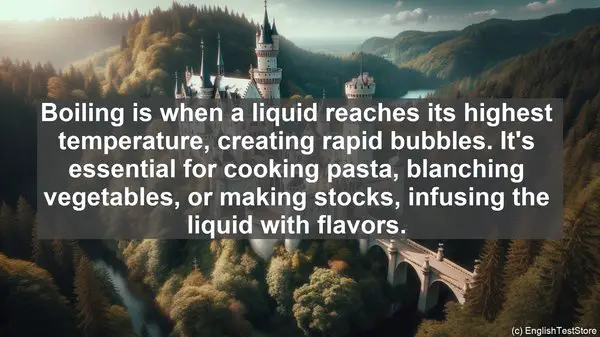Introduction: The Language of Cooking
Cooking is not just about the ingredients and techniques; it’s also about the language we use. In this lesson, we’ll explore the top 10 English verbs that are essential for understanding and giving recipe instructions.
1. Chop: The Art of Precision
When a recipe calls for ‘chopping,’ it means cutting ingredients into small, even pieces. Whether it’s vegetables, herbs, or nuts, mastering the art of chopping ensures even cooking and consistent flavors.
2. Sauté: The Sizzle in the Pan
Sautéing involves cooking food quickly in a small amount of oil or butter over high heat. This method adds a delicious caramelized flavor and a crispy texture to ingredients like onions, garlic, or mushrooms.
3. Simmer: Slow and Steady
Simmering is a gentle cooking technique where the liquid is heated to just below boiling point. It’s perfect for stews, soups, or sauces, allowing the flavors to meld together over time.
4. Grate: From Cheese to Zest
Grating is a way of turning solid ingredients into smaller, often finer pieces. Whether it’s cheese, vegetables, or citrus zest, grating adds texture and distributes the flavor evenly throughout the dish.
5. Whisk: The Magic of Emulsion
Whisking is not just about mixing; it’s about creating a smooth, uniform texture. From beating eggs to making a salad dressing, whisking helps combine ingredients and incorporate air for lightness.
6. Fold: Gentle and Delicate
Folding is a technique used when you want to combine ingredients without losing their airiness. It’s often used in baking, like when incorporating whipped cream into a mousse or adding dry ingredients to a batter.
7. Boil: The Rapid Bubble
Boiling is when a liquid reaches its highest temperature, creating rapid bubbles. It’s essential for cooking pasta, blanching vegetables, or making stocks, infusing the liquid with flavors.

8. Season: The Final Touch
Seasoning is not just about adding salt and pepper; it’s about balancing flavors. Whether it’s a pinch of herbs, a dash of vinegar, or a squeeze of lemon, proper seasoning can elevate a dish from good to great.
9. Garnish: The Visual Appeal
Garnishing is the art of adding a finishing touch to a dish. It’s not just about aesthetics; garnishes like fresh herbs, citrus zest, or a drizzle of sauce can enhance the flavors and make the dish more inviting.
10. Plate: The Presentation Matters
Plating is not just about arranging food on a plate; it’s about creating a visual experience. From the choice of plate to the arrangement of components, a well-plated dish can make the dining experience more enjoyable.

